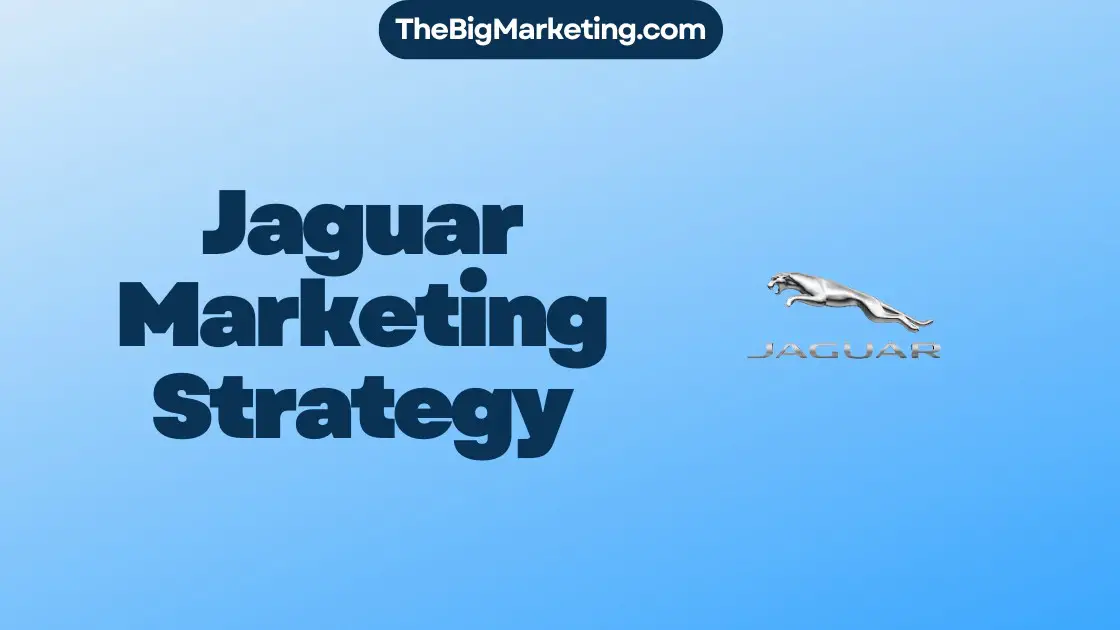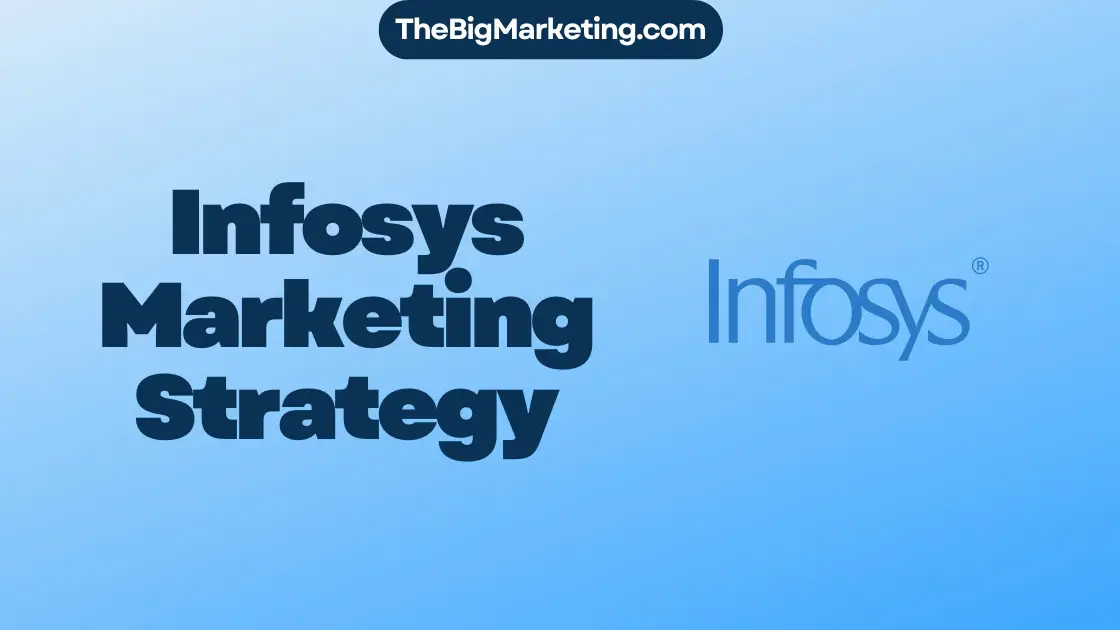Fundraising marketing is a vital component for nonprofit organizations to achieve their goals. By implementing effective strategies, nonprofits can enhance donor acquisition and engagement, ultimately driving their mission forward. In this comprehensive guide, we will dive into the various aspects of fundraising marketing strategy in 2024, covering topics such as nonprofit marketing, inbound marketing for nonprofits, the significance of raising awareness and funds, recruiting volunteers, and promoting services.
Key Takeaways:
- A successful fundraising marketing strategy is crucial for nonprofit organizations in 2024.
- Understanding the importance of nonprofit marketing and inbound marketing for nonprofits is vital.
- Raising awareness and funds plays a significant role in the success of nonprofit organizations.
- Recruiting volunteers and promoting services are essential aspects of nonprofit marketing.
- Creating an effective nonprofit marketing plan and optimizing your website for donations are key steps in achieving fundraising goals.
Understanding Nonprofit Marketing
Nonprofit marketing plays a crucial role in amplifying an organization’s cause and mission. It involves the implementation of effective marketing tactics and strategies to solicit donations and attract volunteers while connecting with supporters. Nonprofit marketing serves the dual purpose of raising awareness and funds, driving donor memberships, recruiting volunteers, and promoting services.
The Importance of Nonprofit Marketing
Nonprofit marketing is vital for organizations to increase their reach and engage their target audience effectively. By leveraging marketing strategies, nonprofits can create meaningful connections with individuals who share their passion for the cause. This engagement is essential for raising awareness, attracting financial support through donations, and mobilizing volunteers who are willing to contribute their time and skills.
Amplifying the Organization’s Cause
Nonprofit marketing enables organizations to amplify their cause and mission by utilizing various marketing channels, including social media, email marketing, content creation, and storytelling. Through compelling messaging and storytelling, nonprofits can captivate their audience’s attention, create emotional connections, and inspire action. This amplification of the organization’s cause generates interest and enthusiasm, encouraging individuals to get involved, support the organization, and make a difference.
Soliciting Donations
A significant aspect of nonprofit marketing is soliciting donations to fund the organization’s activities and initiatives. By implementing effective fundraising strategies, nonprofits can communicate the impact of their work and the importance of financial support. These strategies include targeted campaigns, donor recognition programs, and engaging storytelling that connect donors to the impact they can make.
Attracting Volunteers
Nonprofit marketing also aims to attract volunteers who are willing to contribute their time, skills, and expertise to the organization’s cause. By showcasing the value of volunteering and the positive impact it can have, nonprofits can inspire individuals to join their efforts. Marketing strategies such as volunteer recognition programs, testimonials, and engaging content can help attract and retain dedicated volunteers.
Inbound Marketing for Nonprofits
Inbound marketing is an essential strategy for nonprofit organizations to attract new supporters, connect with donors, and engage constituents. By implementing effective inbound marketing strategies, nonprofits can create valuable experiences that positively impact their target audience and the organization as a whole.
Attracting New Supporters
One of the main goals of inbound marketing for nonprofits is to attract new supporters. This can be achieved through various tactics such as creating compelling content, utilizing search engine optimization (SEO) techniques, and leveraging social media platforms. By providing valuable and relevant information to potential supporters, nonprofits can build credibility and establish themselves as authoritative voices in their respective fields.
Connecting with Donors
Inbound marketing allows nonprofits to connect with valuable donors and cultivate long-lasting relationships. By leveraging personalized communication strategies, nonprofits can tailor their messaging and outreach efforts to resonate with potential and existing donors. Engaging donors through targeted emails, social media interactions, and personalized thank-you messages can make them feel appreciated and valued, leading to increased donor retention and support.
Engaging Constituents
Inbound marketing strategies enable nonprofits to engage constituents in meaningful ways. By providing valuable content and opportunities for involvement, nonprofits can inspire their target audience to take action and become active participants in the organization’s mission. This can include encouraging constituents to volunteer, attend events, or participate in advocacy efforts. Engaging constituents creates a sense of belonging and encourages them to become brand ambassadors, spreading the word about the organization and its impact.
| Benefits of Inbound Marketing for Nonprofits | Examples |
|---|---|
| Increased brand visibility and awareness | Utilizing social media platforms to share inspiring stories related to the organization’s mission |
| Improved donor acquisition and engagement | Using personalized email campaigns to connect with potential donors and nurture relationships with existing donors |
| Enhanced connection with constituents and volunteers | Creating interactive and engaging content, such as quizzes or polls, to encourage participation from constituents and volunteers |
| Increased support and donations | Showcasing the impact of donations through success stories and testimonials, reinforcing the value of donor contributions |
The Importance of Raising Awareness
Raising awareness is an essential aspect of nonprofit organizations. Just like businesses, nonprofit organizations need to prioritize building brand awareness to effectively spread the word about their cause and mission. By implementing strategic marketing strategies, nonprofits can significantly increase the visibility of their organization, reach a wider audience, and create a larger impact on their cause.
Building brand awareness allows nonprofit organizations to establish themselves as credible and trustworthy entities within their respective industries. It helps in gaining recognition and establishing a strong presence in the community. By consistently conveying their unique value proposition, nonprofits can attract more supporters, donors, and volunteers who resonate with their mission.
One effective way to raise awareness is through online platforms and social media. With the widespread use of digital platforms, nonprofits can directly engage with their target audience, share compelling stories, and inspire action. Engaging content that highlights the organization’s mission, impact, and success stories can leave a lasting impression on the audience, encouraging them to support the cause and spread the word further.
The Power of Brand Awareness
Brand awareness goes beyond recognition. It establishes an emotional connection between the nonprofit organization and its supporters. By building a strong brand, nonprofits can cultivate loyalty and trust among their audience, resulting in long-term engagement and sustained support.
When individuals feel emotionally connected to a cause, they are more likely to become advocates and ambassadors, leveraging their own networks to raise awareness and support. This word-of-mouth promotion can serve as a powerful tool for nonprofits to expand their reach and attract new supporters.
In addition, brand awareness helps mitigate the challenges faced by nonprofit organizations, such as attracting donors and securing funding. When individuals are familiar with a nonprofit brand and its reputation, they are more inclined to contribute financially. A strong brand presence translates into increased credibility and can open doors to partnerships, sponsorships, and grant opportunities.
Effective Strategies for Raising Awareness
To effectively raise awareness for a nonprofit organization, it is important to have a well-crafted marketing strategy in place. Here are some key strategies to consider:
- Storytelling: Harness the power of storytelling to engage and inspire your audience. Share personal narratives, success stories, and impactful experiences that resonate with your target audience.
- Partnerships and Collaborations: Collaborate with like-minded organizations, influencers, and local businesses to leverage their audience and amplify your message.
- Events and Campaigns: Organize events, fundraisers, and awareness campaigns to create a buzz and engage with the community directly.
- Online Marketing: Utilize social media platforms, email marketing, and search engine optimization to expand your online presence and connect with a broader audience.
- Community Engagement: Actively participate in community events, volunteer activities, and forums to establish a strong presence and build meaningful relationships.
The success of these strategies relies on consistently delivering a clear and compelling message that aligns with the organization’s mission and resonates with the target audience. By implementing these strategies and actively working towards raising awareness, nonprofit organizations can effectively spread their message, gain support, and make a lasting impact on their cause.
The Role of Fundraising in Nonprofit Marketing
Fundraising and nonprofit marketing go hand-in-hand. The more people know about your organization, the more potential funding you can bring in. Nonprofit marketing plays a crucial role in raising funds and driving donor memberships. By effectively marketing your organization, you can inform your donors about how they can contribute consistently and make a meaningful impact on your cause.
Benefits of Fundraising in Nonprofit Marketing
Fundraising is a key component of nonprofit marketing as it helps organizations raise funds to support their mission and activities. Here are some of the benefits of incorporating fundraising into your nonprofit marketing strategy:
- Financial Support: Fundraising enables nonprofits to secure the financial resources needed to implement programs, expand services, and make a greater impact on their cause.
- Donor Engagement: By involving donors in fundraising efforts, nonprofits can cultivate stronger relationships, enhance donor loyalty, and increase long-term support.
- Enhanced Outreach: Fundraising activities provide opportunities for nonprofits to reach a wider audience, raise awareness about their cause, and attract new supporters.
- Empowering Donors: Fundraising campaigns give donors a chance to actively participate in the mission of the organization and make a difference in their community.
Through strategic fundraising initiatives, nonprofits can not only generate the necessary funds but also strengthen their relationship with donors and create a sustainable support base. By aligning fundraising efforts with overall nonprofit marketing strategies, organizations can amplify their impact and achieve their goals.
| Fundraising Strategies | Benefits |
|---|---|
| Annual Campaigns | Generate consistent revenue, engage donors on a regular basis |
| Major Donor Cultivation | Build relationships with high-value donors, secure large donations |
| Events and Galas | Attract new donors, provide networking opportunities, raise funds through ticket sales and sponsorships |
| Online Crowdfunding | Tap into the power of social media, reach a broader audience, encourage grassroots support |
| Corporate Partnerships | Secure funding from businesses, enhance brand reputation, access new networks and resources |
Implementing a diversified approach to fundraising can maximize the potential for raising funds, engaging donors, and expanding the reach of your nonprofit organization. By integrating fundraising strategies into your overall marketing plan, you can create a sustainable funding model and drive long-term success.
Recruiting Volunteers through Nonprofit Marketing
Nonprofit organizations rely on the dedication and support of volunteers to achieve their mission. Recruiting and engaging volunteers is an essential aspect of nonprofit marketing strategy. By leveraging effective marketing techniques, nonprofits can attract individuals who are passionate about their cause and inspire them to contribute their time and skills.
Volunteers play a vital role in the success of nonprofit organizations, regardless of their industry or size. They bring valuable expertise, enthusiasm, and a commitment to creating positive change. In fact, studies have shown that volunteers are twice as likely to donate financially compared to non-volunteers, making them valuable assets to your organization.
To recruit volunteers effectively, nonprofits must develop targeted marketing campaigns that resonate with potential volunteers. Here are some strategies to consider:
1. Tell Your Story
When promoting volunteer opportunities, it’s essential to share your organization’s story and mission. Craft compelling narratives that highlight the impact volunteers can make and the rewarding experiences they can have. Use storytelling to evoke emotions and connect with potential volunteers on a deeper level.
2. Leverage Social Media Platforms
Social media platforms provide a powerful way to reach a wide audience and engage potential volunteers. Create engaging content that showcases volunteer success stories, highlights the impact of their work, and promotes upcoming volunteer opportunities. Encourage your current volunteers to share their experiences, which can inspire others to get involved.
3. Collaborate with Community Partners
Identify community partners, such as local businesses, schools, or civic organizations, that align with your mission. Collaborate with them to promote volunteer opportunities through their networks. By leveraging existing relationships, you can expand your reach and attract individuals who are already invested in supporting community causes.
Nonprofit marketing plays a crucial role not only in fundraising but also in recruiting volunteers. With compelling storytelling, strategic social media engagement, and collaborative partnerships, nonprofits can successfully attract and engage volunteers who are passionate about their cause and dedicated to making a difference.
Promoting Services with Nonprofit Marketing
Nonprofit marketing goes beyond fundraising. It also involves promoting the services that your organization provides, informing the public about the people, animals, or cause you’re helping. By effectively marketing your services, you can promote the impact you’re making and reach a wider audience.
The Power of Effective Nonprofit Marketing
Through strategic marketing efforts, you can raise awareness about the services your organization offers and connect with individuals who may benefit from them. Nonprofit marketing enables you to showcase the value and impact of your services, ultimately informing the public about the help and support you provide.
By effectively communicating your mission, values, and the services you offer, you can attract individuals who are passionate about your cause and increase your organization’s reach. This can result in more individuals seeking your services, more partnerships with relevant organizations, and ultimately, a greater positive impact.
Creating Compelling Marketing Campaigns
When promoting your nonprofit’s services, it is important to develop compelling marketing campaigns that resonate with your target audience. This involves crafting powerful messages that highlight the unique value your services provide and the difference they make in people’s lives.
One effective way to engage with your audience is by leveraging storytelling. Share impactful stories of individuals or communities who have benefited from your services, emphasizing the transformation and positive outcomes that your organization has facilitated. By showcasing these stories through various marketing channels, such as your website, social media platforms, and email newsletters, you can inspire the public and encourage them to seek your services or support your cause.
Partnering with Influencers and Collaborators
Collaborating with influencers and other relevant organizations can significantly amplify your reach when promoting your nonprofit’s services. Identify individuals or organizations with a strong presence in your target audience and partner with them to spread the word about your services. This can involve sponsored social media posts, blog collaborations, or joint events.
When selecting influencers or collaborators, ensure that their values align with your organization’s mission and that their audience is relevant to your target demographic. By leveraging their influence and partnership, you can increase awareness of your services and attract individuals who are more likely to engage with and benefit from them.
| Benefits of Promoting Services with Nonprofit Marketing |
|---|
| 1. Increased awareness of your organization’s services |
| 2. Greater reach and engagement with your target audience |
| 3. Expansion of partnerships and collaborations with like-minded organizations |
| 4. Opportunity to share impactful stories and inspire the public |
| 5. Attraction of individuals who can benefit from your services |
Components of an Effective Nonprofit Marketing Plan
A nonprofit marketing plan is key to successfully executing your organization’s marketing strategy. It comprises various components that work together to enhance your outreach efforts and achieve your goals.
One crucial component of a nonprofit marketing plan is setting Marketing SMART goals. SMART is an acronym for Specific, Measurable, Attainable, Relevant, and Timely. By creating goals that meet these criteria, you can establish clear objectives and measure your progress accurately. For example, a SMART goal might be to increase online donations by 20% within six months.
Another essential element of a nonprofit marketing plan is understanding your target audience. Who are the individuals or groups most likely to be interested in your cause or mission? By defining your target audience, you can tailor your marketing efforts to resonate with them effectively. Conduct research, collect data, and create personas to gain a deeper understanding of your audience’s demographics, behaviors, and preferences.
Your nonprofit marketing plan should also include a compelling mission statement. This statement reflects the core purpose of your organization and communicates its values and vision. A well-crafted mission statement helps establish your brand identity and attract supporters who align with your mission. Be concise, impactful, and memorable when writing your mission statement.
Lastly, the stakeholder and staff structure is an integral part of a nonprofit marketing plan. Identify the key stakeholders involved in your marketing efforts, such as board members, staff, volunteers, and external partners. Clearly define their roles and responsibilities to ensure everyone understands their contribution to the overall marketing strategy.
By incorporating these components into your nonprofit marketing plan, you can create a roadmap that guides your organization towards success.
Optimizing Your Website for Donations
Optimizing your website for donations is crucial for enhancing donor engagement and increasing your fundraising efforts. By prioritizing website optimization, you can create a user-friendly and streamlined donation process that encourages visitors to support your cause. Here are some key strategies to consider:
1. User Experience (UX)
A positive user experience plays a vital role in driving donations on your website. Ensure that your website has a clean and intuitive design that is easy to navigate. Implement clear call-to-action buttons and minimize distractions to keep visitors focused on the donation process. By optimizing your website’s UX, you can create a seamless and enjoyable donation experience for your supporters.
2. Mobile Responsiveness
In today’s digital age, it’s crucial to have a mobile-responsive website. With the increasing use of smartphones and tablets, many donors prefer to make donations on their mobile devices. Make sure your website is fully optimized for mobile viewing, with responsive design elements and easy-to-use donation forms. This way, you can cater to the growing number of mobile users and provide a convenient donation experience.
3. Streamlined Donation Process
Streamlining the donation process is essential for maximizing conversion rates. Simplify your donation forms by asking for essential information only, reducing the number of steps required, and integrating pre-filled options for returning donors. Additionally, provide various secure payment options, such as credit cards, PayPal, or Apple Pay, to accommodate donors’ preferences. By streamlining the donation process, you can minimize friction and increase the likelihood of completing donations.
Take a look at the example below to see how optimizing your website for donations can enhance the user experience and streamline the donation process:
| Traditional Donation Process | Optimized Donation Process |
|---|---|
| Detailed donation form with numerous fields to fill | Simplified donation form with essential fields only |
| Multiple steps to complete the donation | Single-page donation process |
| Limited payment options | Various secure payment options |
| Unclear call-to-action and navigation | Clear call-to-action buttons guiding donors |
As you can see, optimizing your website for donations can significantly improve the user experience and increase the likelihood of donors completing their contributions.
By implementing these strategies and continuously testing and refining your website, you can create a seamless online donation experience that inspires visitors to support your cause and make a meaningful impact.
Conclusion
In conclusion, implementing effective fundraising best practices and staying updated with new trends in donor marketing are crucial for achieving nonprofit success in 2024. Collaborating with your marketing team and understanding your target audiences are essential starting points. By leveraging social media and email marketing, you can engage with your donors and keep them informed about your organization’s initiatives.
Personalizing your communication and harnessing the power of data will allow you to make informed decisions and tailor your messaging to resonate with your donors on a deeper level. Remember to regularly evaluate your fundraising efforts and adjust your strategies as needed to optimize your donor acquisition and engagement.
With a well-planned nonprofit marketing strategy, you can create meaningful connections with your donors, inspire them to support your cause, and make a significant impact on your organization’s mission. Stay proactive, adapt to changes, and continually strive for excellence in donor marketing to ensure the long-term success of your nonprofit.





